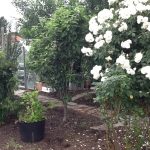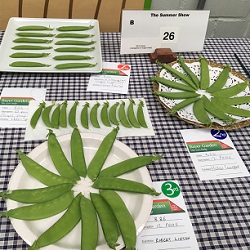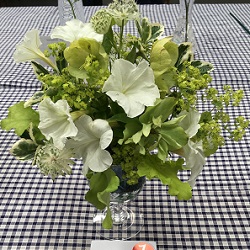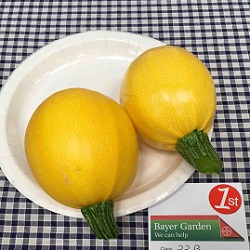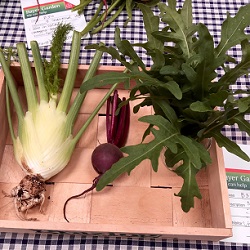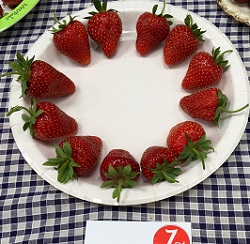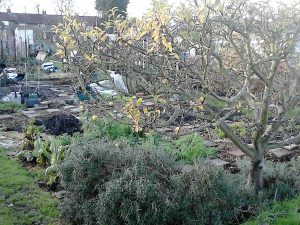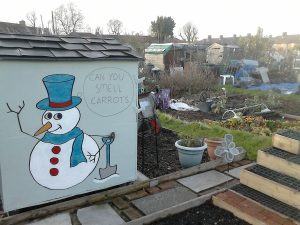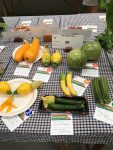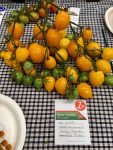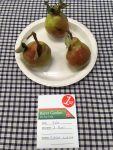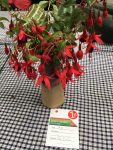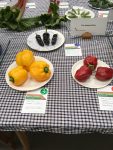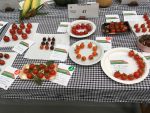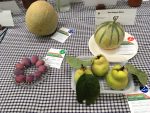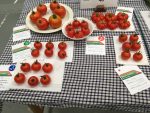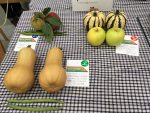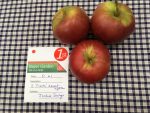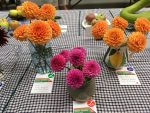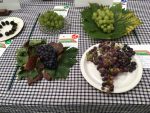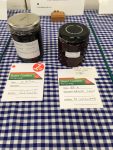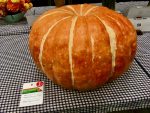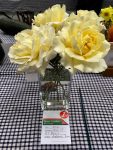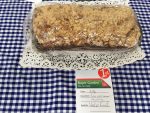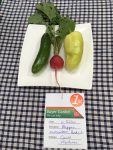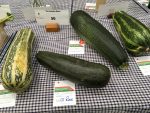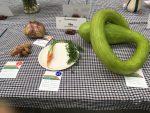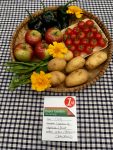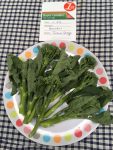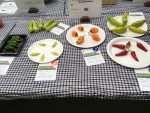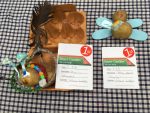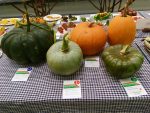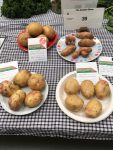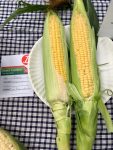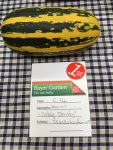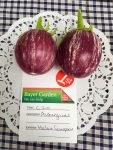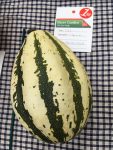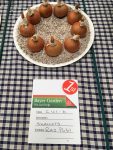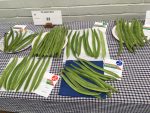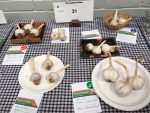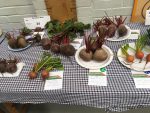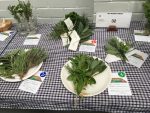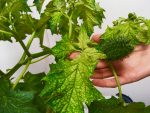Thank you to the members who commented on our new complaints procedure and social cohesion policies. Below are the final draft policies which will be taken to the AGM for final ratification.
Author Archives: RXY
Pictures from the 2019 summer show
A sunny, special occasion with a festive feel, the summer show was a great success and enjoyed by all. With thanks to those who set up, served, baked, judged, helped, enjoy re-visiting the occasion – or see what you missed! Full results in the next bulletin.
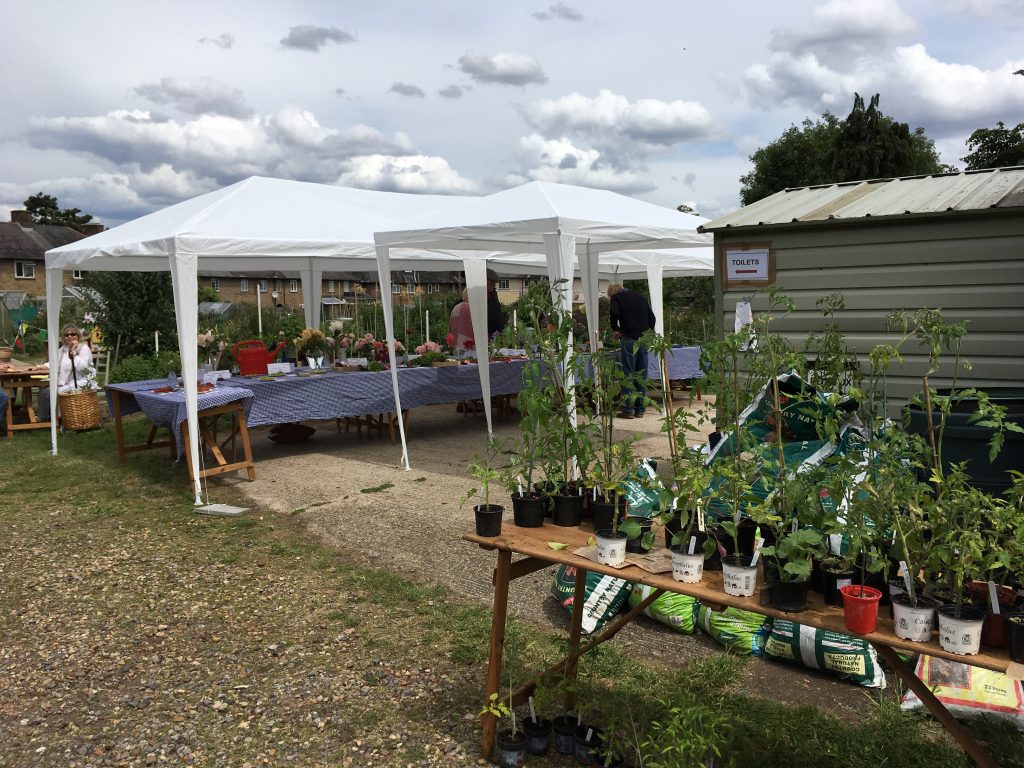
Ready and waiting 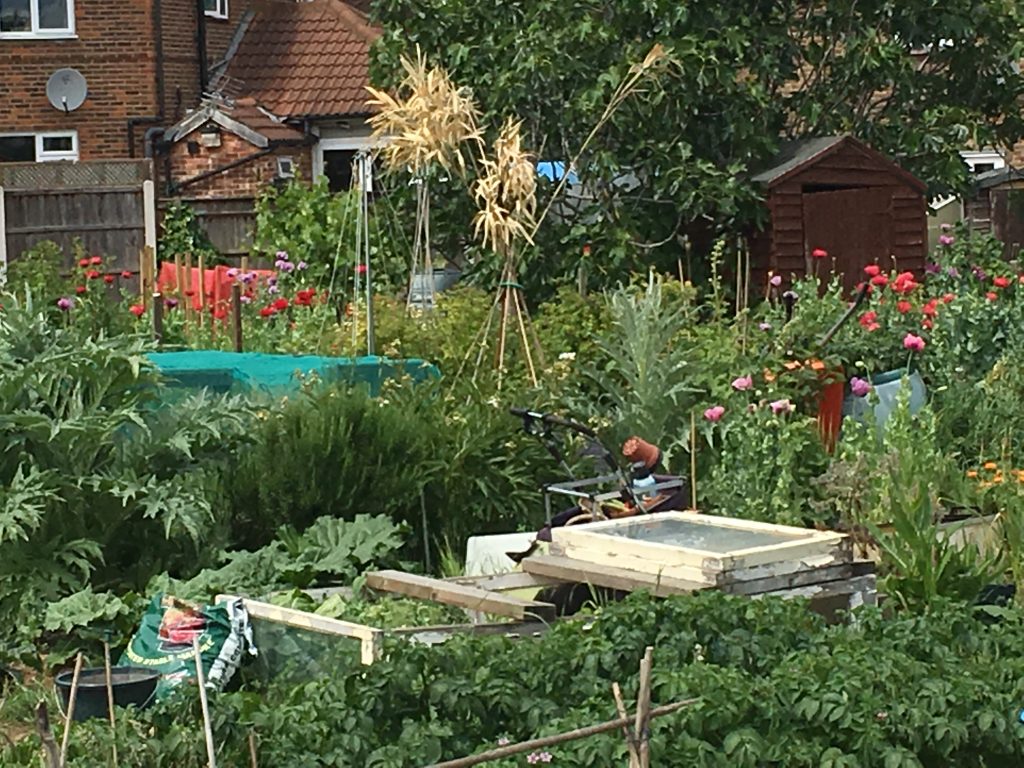
Site 2 looking great 
Roses, roses 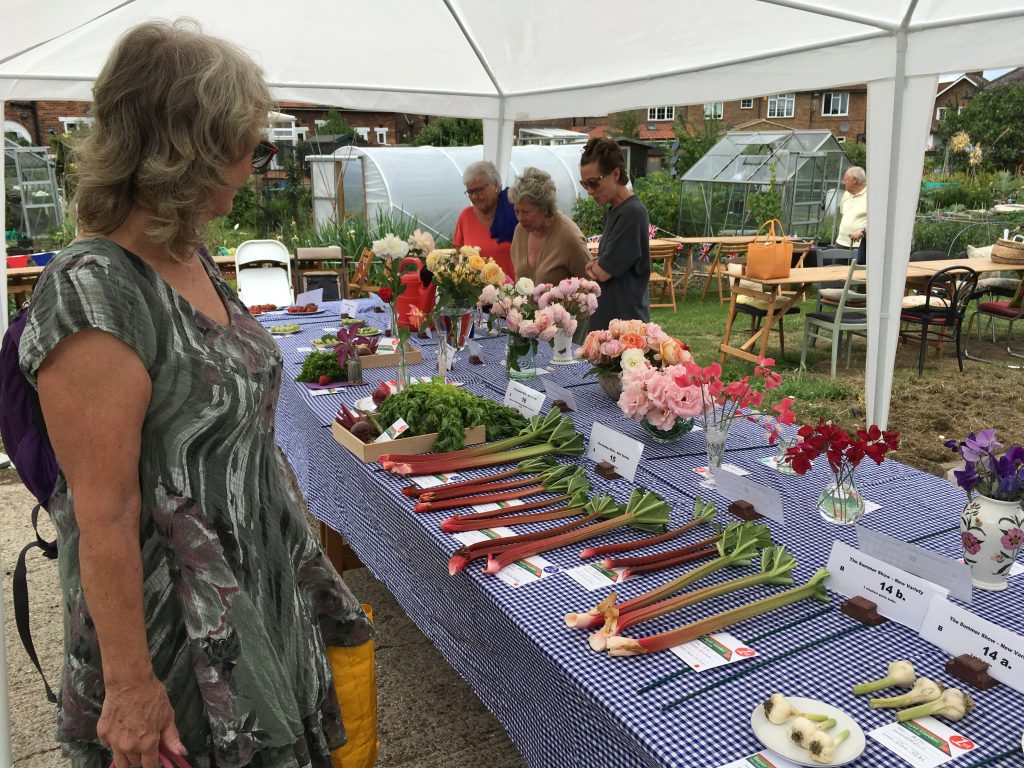
Best of the rhubarb 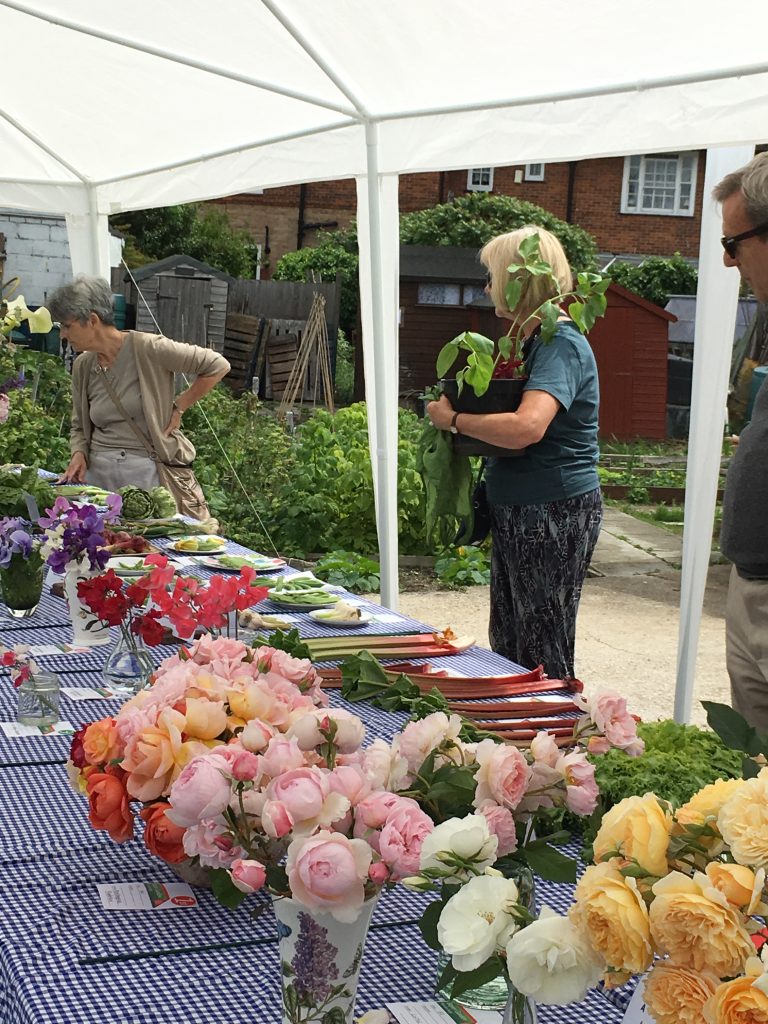
Wonderful display 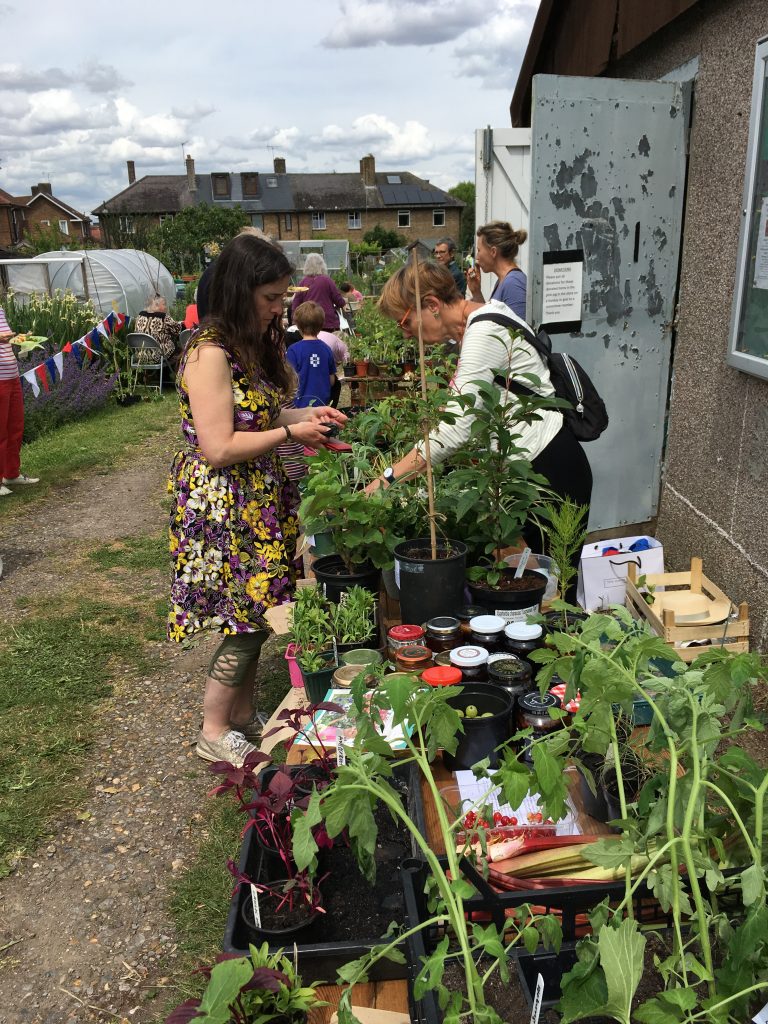
Plants and produce 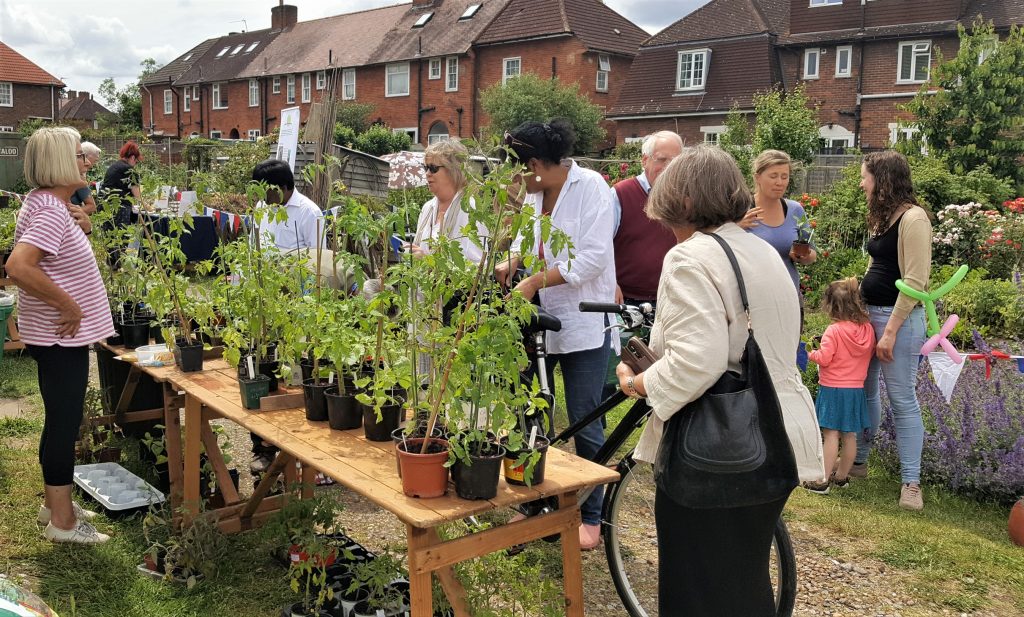
Plant stall 
Gathering for lunch 
Lunch in the sun 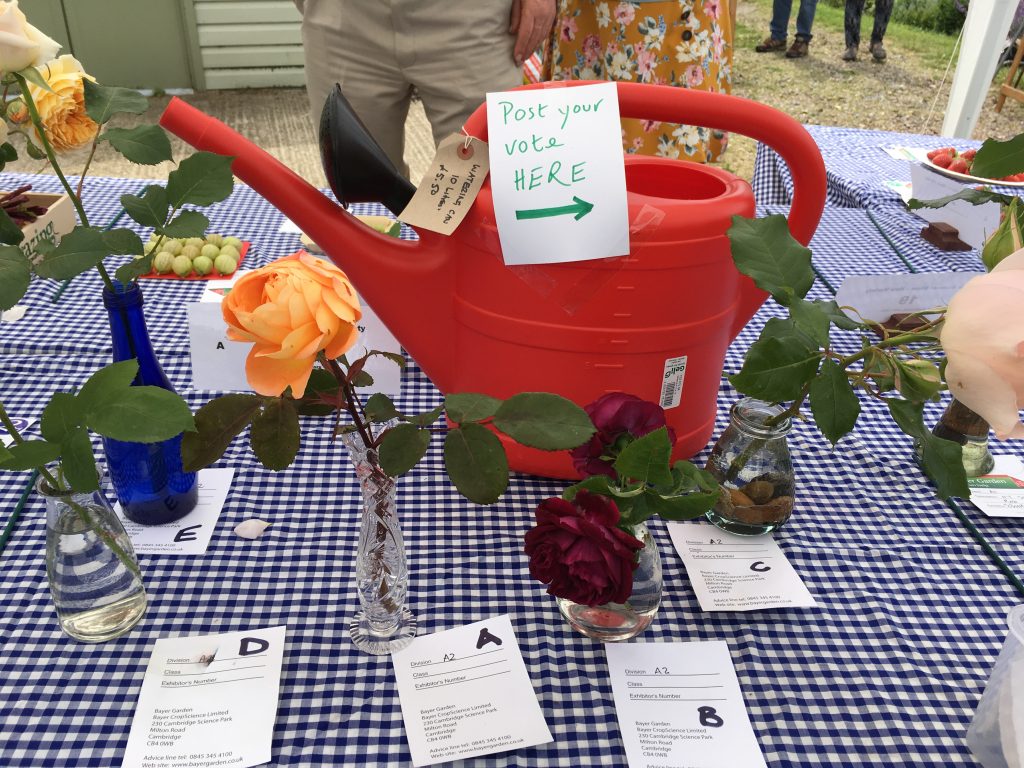
Fragrant rose competition 
Which rose to choose? 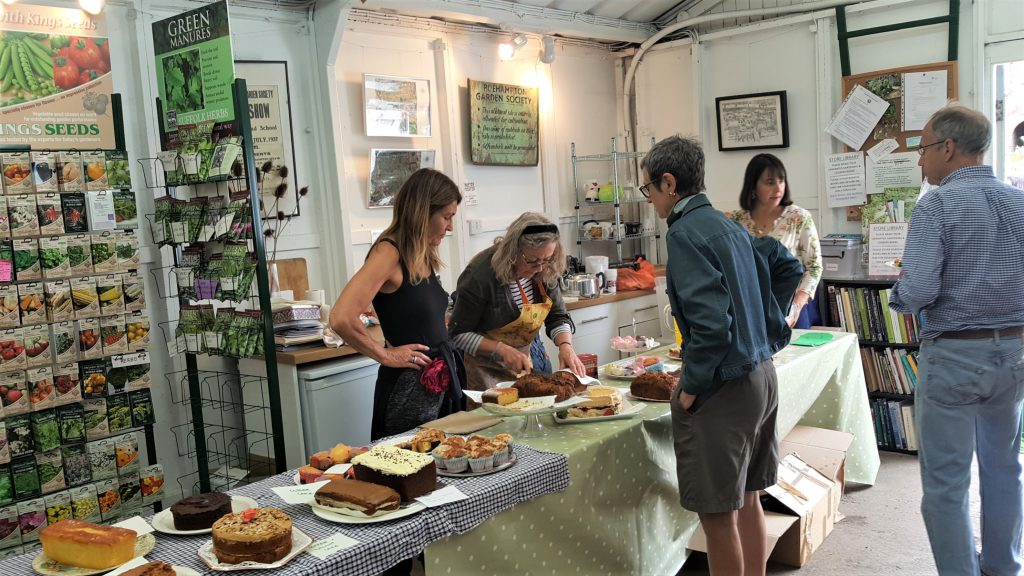
Tea time 
Teas and Produce 
Cakes for summer 
Voting for the best 
Summer punch 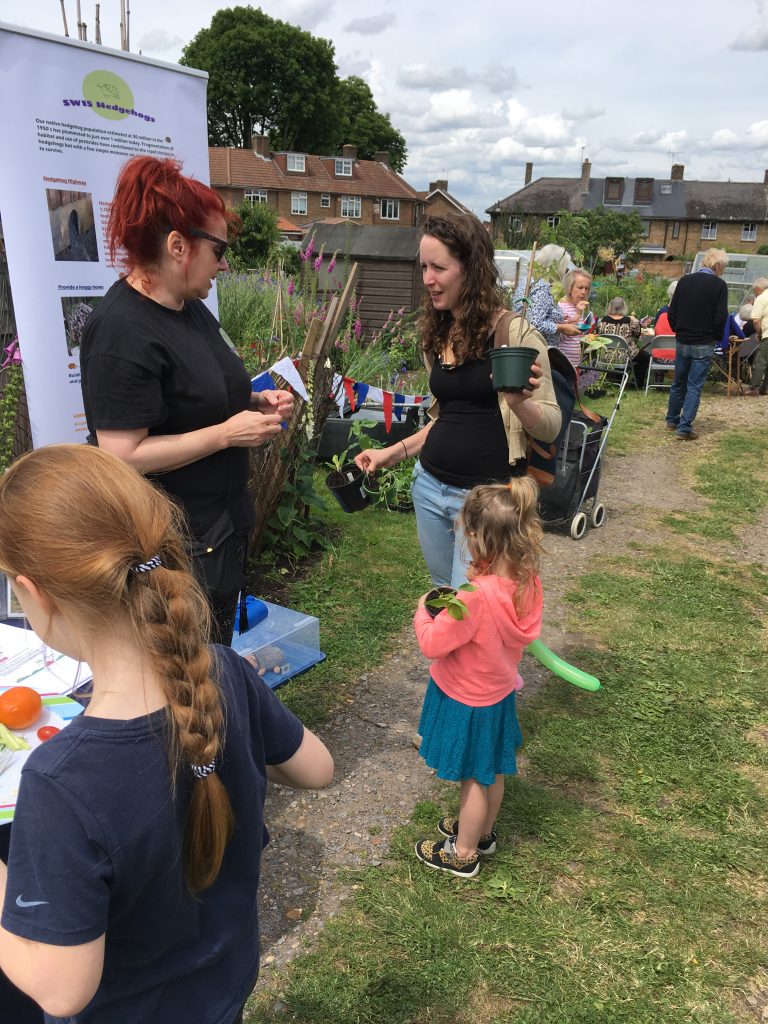
All about hedgehogs 
Enjoying the view 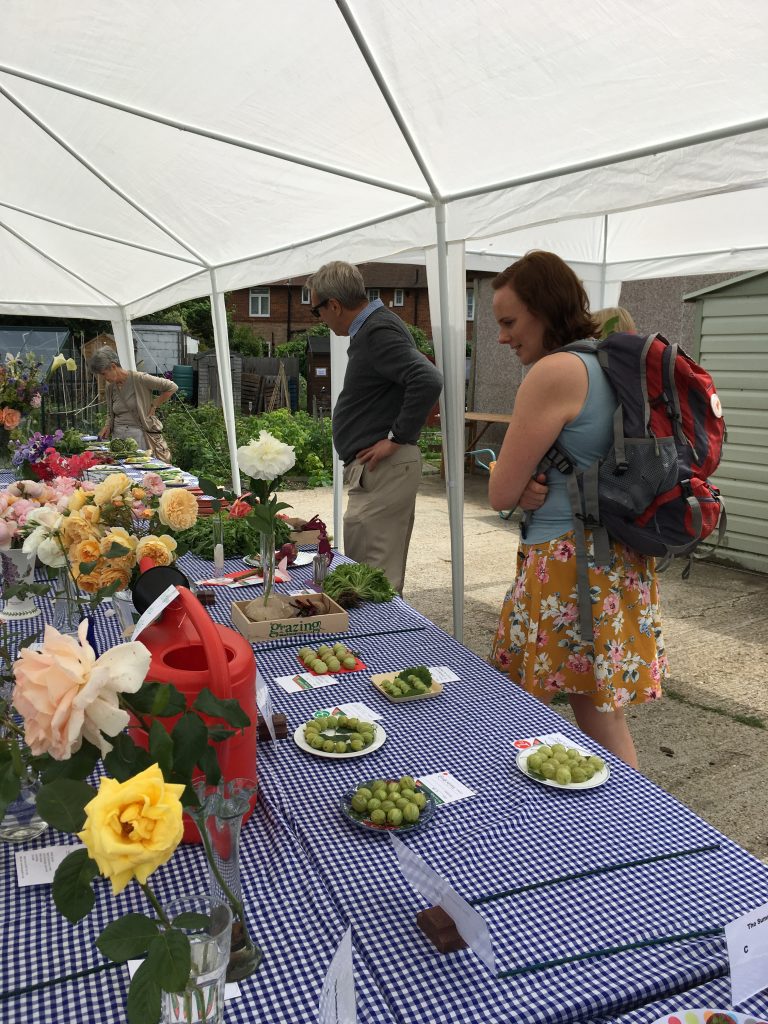
Fruit and flowers 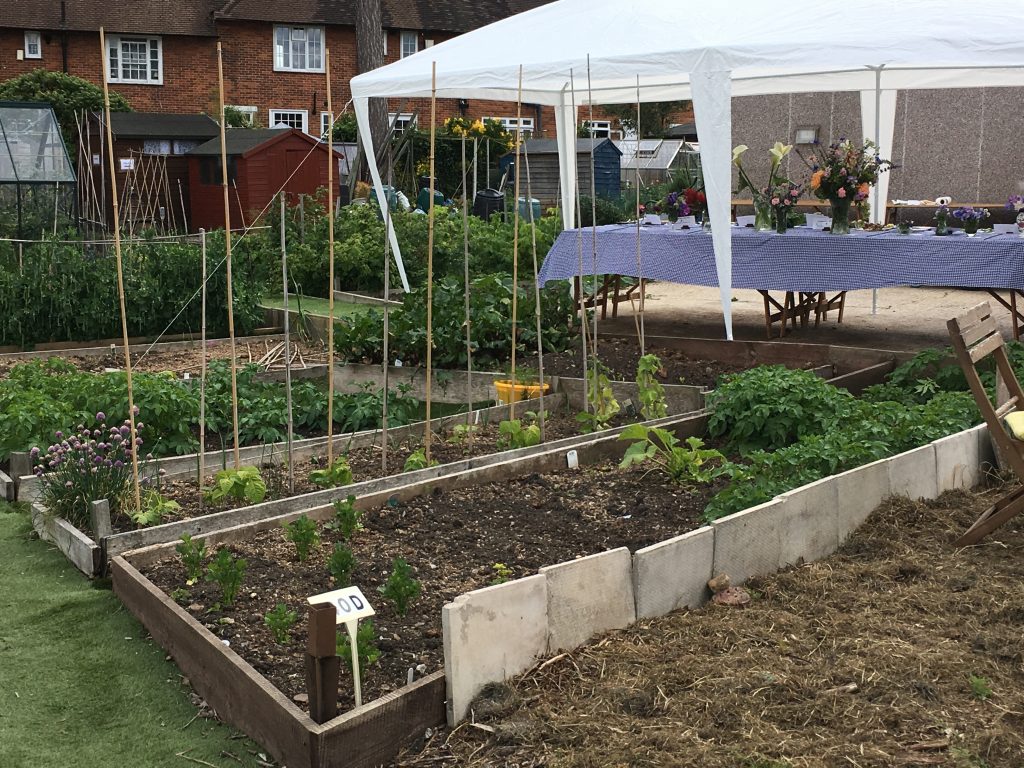
Growing neatly 
Family space 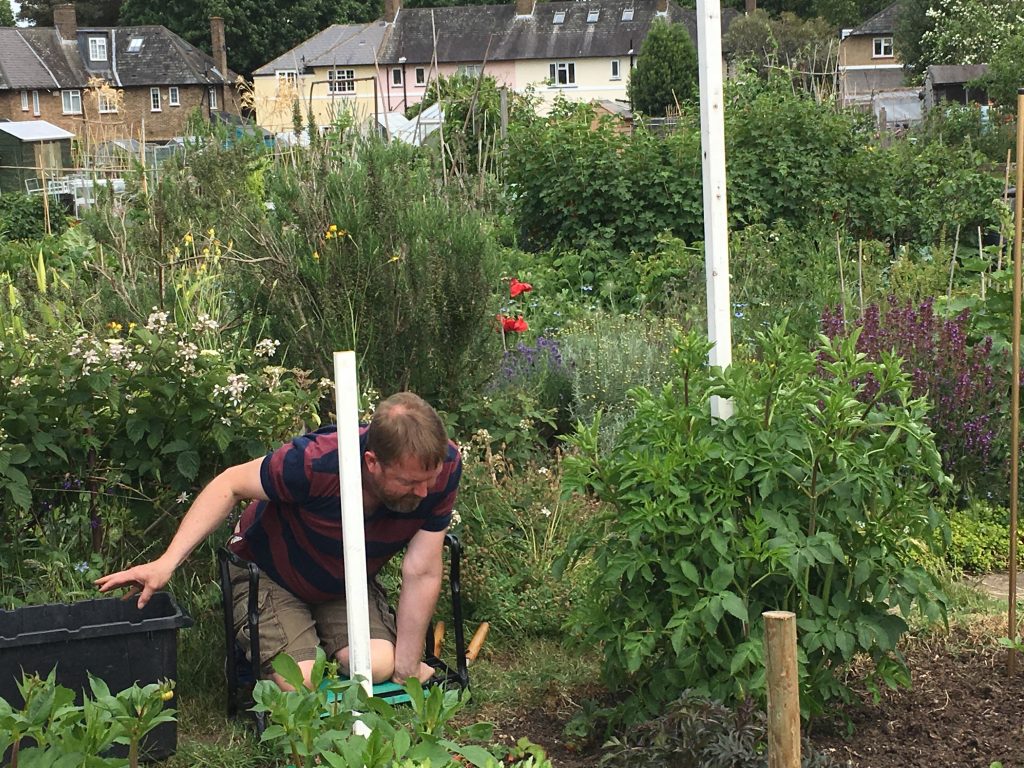
Work goes on 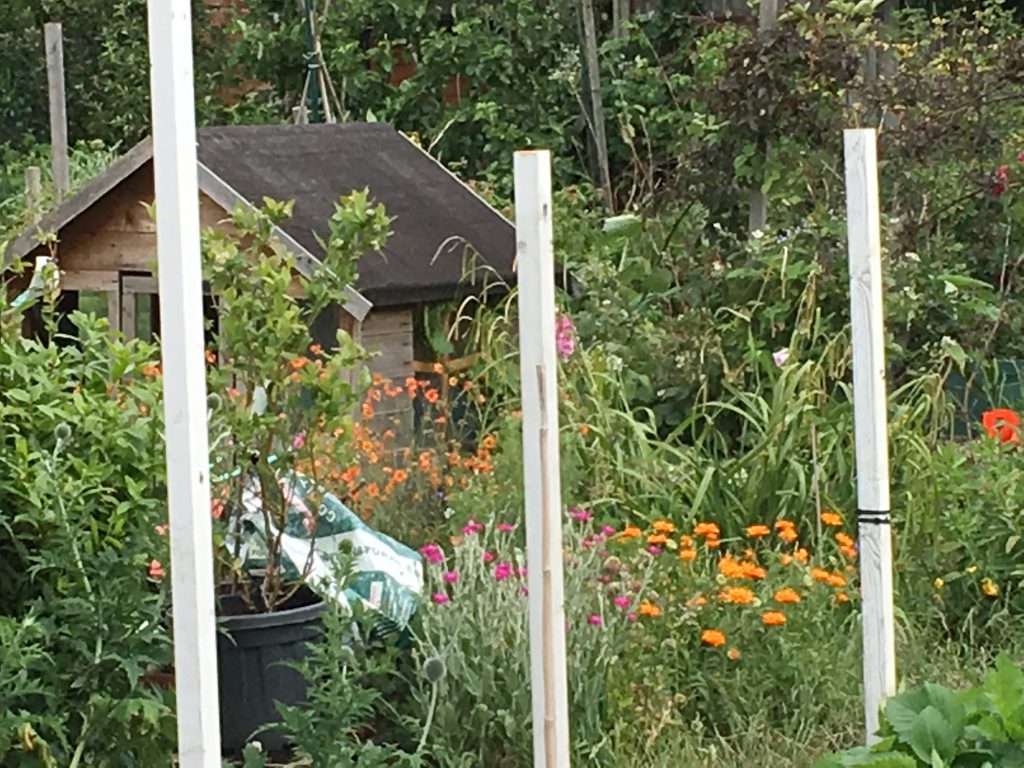
Crops and colour 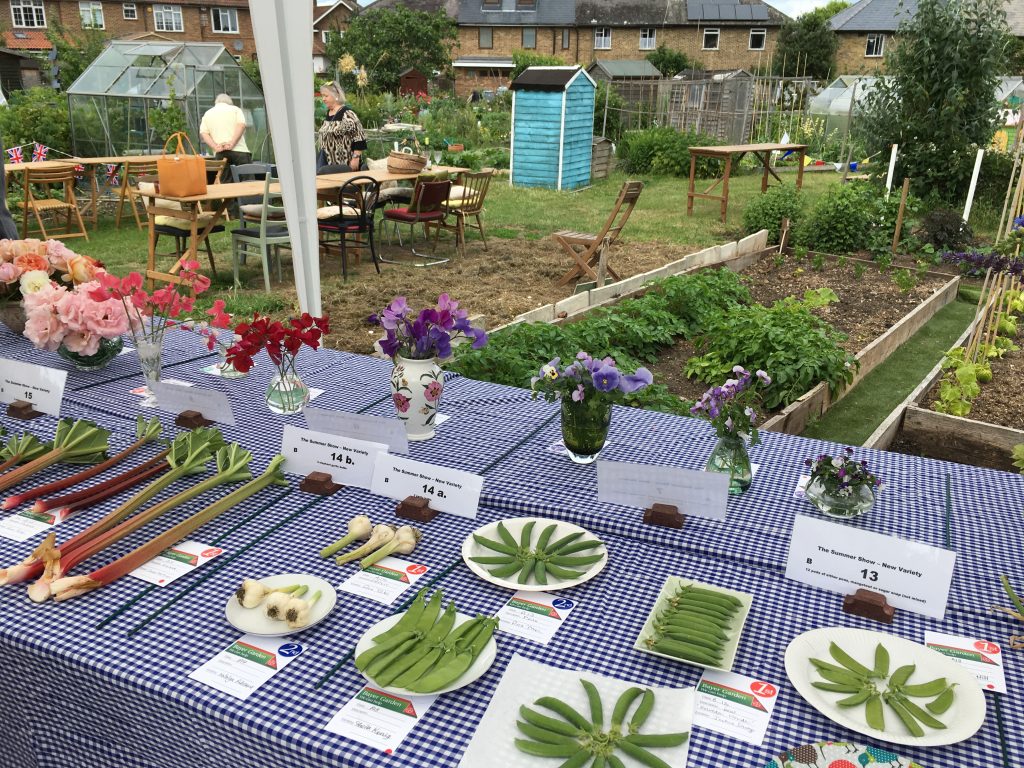
Grown in roehampton
Summer Show 2019 – Sunday 9th June
Our new style Summer Show will take place on the RGS Allotments Site 2 at 1pm. Come and enjoy meeting other gardeners – lunch in the open air and view the exhibits. The plant stall will be busy as usual and there’s a cake competition for all our bakers.
It’s an opportunity to showcase the lovely things we grow – please do enter for at least one class. There’s lots of advice about how to do this in the ‘Guidance for entrants’ and a full list of classes in the ‘Summer Show Schedule’ – which also has an entry form attached. Bring your exhibits along between 10 am and 12 noon.
RGS members consultation
These documents are drafts of an update to our Complaints Procedure and a Code for Social Cohesion. They will be used to resolve any disputes and complaints. We welcome your views. If any member would like to comment on these drafts, please use the ‘general enquiry’ form on this website here or email rgs.sw15@gmail.com . This consultation is open until the end of May 2019.
May jobs on your allotment
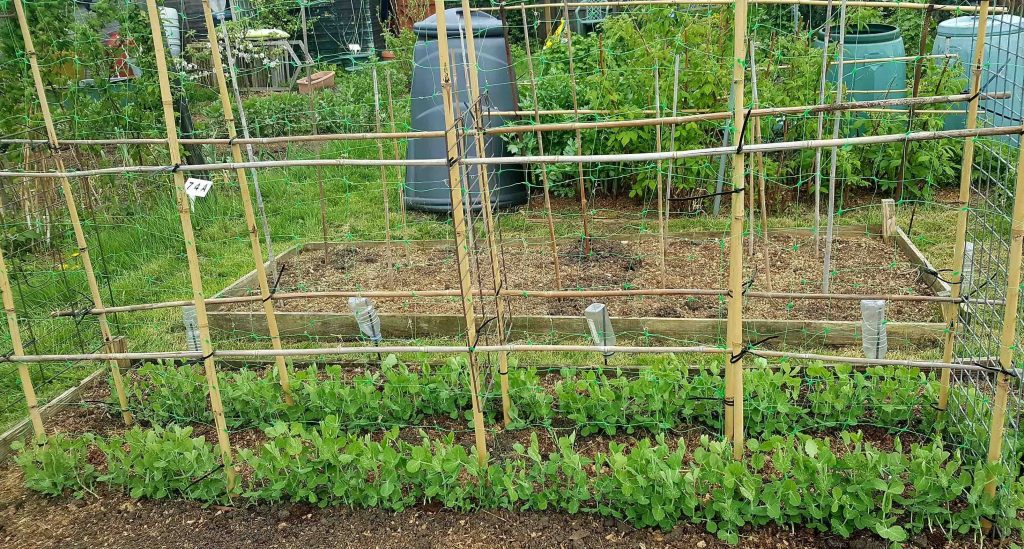
Maintaining soil and structures and planning ahead
- Hand weed and hoe regularly to keep on top of weeds. (Chickweed will produce 2,000 seeds per plant per season if left untouched!)
- Keep the soil in good condition. Add garden compost or well-rotted manure to maintain soil structure and retain moisture and nutrients.
- Sow fast-growing green manure such as crimson clover, buckwheat and phacellia where there are areas of bare soil or where summer or autumn vegetables are to be planted out. Dug in before July they will fix nitrogen in the soil and improve soil structure.
- Plant comfrey. The leaves can be used as a compost activator or for making an excellent liquid feed.
- Keep adding to the compost heap, making sure to mix ‘greens’ (lawn cuttings, kitchen vegetable waste) with ‘browns’ (ripped cardboard, straw etc) and added layers of uncomposted stable manure.
- Continue to mow grass paths. (Lawn mowers, free to borrow, are stored in the toilets on both sites.)
- Apply greenhouse shading to limit temperatures to 27c (81f) and ventilate on warmer days.
- Watch night time temperatures and cover vulnerable plants with fleece or cloches if necessary.
- Net cherry trees against birds as cherries begin to form.
Sowing and growing
- Sow salad crops including radishes, spring onions, spinach and beetroot successionally for continuous cropping.
- Sow herbs such as basil, coriander, dill and parsley.
- Early in the month sow cucumbers and courgettes pots indoors for planting out later.
- Sow cauliflowers, sprouting broccoli, Brussels sprouts and leeks for harvesting next winter.
- Sow sweetcorn, French and runner beans direct into the soil.
- Sow carrots in finely raked soil. Use insect mesh to protect from carrot fly, securing well by pushing edges in to the soil, or sow in containers higher than 2 feet to lessen risk of carrot fly attack.
- Sow pumpkins, squashes and outdoor cucumbers under cover now or outdoors towards the end of the month. Watch for cold nights.
- Make late sowings of peas by the end of the month.
- Prepare a fine seed bed and sow flowering annuals to attract pollinating insects.
- Support broad beans and with stakes and tie in with strings.
- Watch out for blackfly on broad beans and rub off or wash off with squirted water. Pinch off the tips with blackfly above the flowers as soon as the first beans start to form and bury in the compost heap.
- Earth up potatoes when shoots are approx. 9 inches to prevent green tubers, pulling the earth up with a rake to form peaked rows. Remove any cold-damaged foliage.
- Watch out for early summer dryness. Recently planted trees, shrubs and fruit need regular watering for the first two growing seasons.
- Remove raspberry suckers encroaching onto paths or between rows.
- Check gooseberries and redcurrants for sawfly larvae and remove manually.
- Plant out tomatoes towards the end of the month watching out for drops in night time temperatures below 12 degrees c.
- Start to remove side shoots from leaf axils of cordon tomatoes.
- Plant out Brussels sprouts, celeriac and leeks for autumn and winter harvesting.
- Hang pheromone traps in apple trees to reduce codling moth caterpillar attack.
- Start hardening off tender plants for planting out at the end of the month.
- Place straw under strawberries to keep fruit clean and deter slug damage. Feed with tomato fertiliser every week.
Harvesting
- Harvest up to half stems of established rhubarb when the stalk reaches 9-12 in. Pull (do not cut) stalks, taking no more than half at any one time.
- Start harvesting established asparagus spears when 5-7” tall.
- Harvest early crops of radishes and salad leaves as they appear.
Gardening for Wildlife
- When plant buying choose single flowers as better sources of pollinating insect food than double blooms.
- Top up bird feeders to help birds feed their young. Avoid peanuts now as these can choke chicks.
- Froglets and efts (baby newts) will be leaving ponds by now so make sure there is a slope for them to climb up. Make sure there is plant coverage on surrounding flagstones or they will fry on these.
Important 2019 dates for allotment holders
| February 20th | Check your email for your invoice. If it hasn’t arrived let us know |
| February 28th | Giving up your allotment? Let us know before this date (by e-mail or post) to avoid April’s rent. |
| March 31st | Pay your invoice before this date (cheque or bank transfer only please) and collect your new membership card from the store. For Associate members (RGS subscription £2.50) cash will be accepted in the store and membership cards will be issued at that time. |
How to Contact Us
Use our contact form
Email: rgs.sw15@gmail.com
Text: 07736 422 373.
By Post: RGS, The Pleasance Allotments, The Pleasance, London SW15 5HF
January jobs on your allotment
Maintaining soil and structures and planning ahead
- As crops are harvested clear debris and cover cleared soil with weed suppressant.
- Plan a crop system for vegetables- leaving a minimum of two years before replanting crops in the same place.
- Complete winter digging of bare beds and cover the ground to warm beds for early crops.
- Open greenhouse vents on mild days
- Clean greenhouses, staging, pots and seed-trays for the coming growing season.
Sowing and growing
- Apply winter washes to fruit trees to control overwintering pests.
- Start ‘chitting’ tubers of early potatoes in trays in a cool, light, frost-free location.
- Sow broad beans in pots under cover.
- Sow winter salads in a greenhouse or windowsill.
- Sow summer brassicas and spinach on a windowsill to plant out in late February.
- Aubergines can be sown under cover on a sunny windowsill from late January.
- Bring potted runners of strawberries under glass for forcing.
- Sow later sweet peas now and pot on autumn-sown sweet peas, pinching out the tip after 4 pairs of leaves have developed or when plants have reached 3.5 cms. Place on a sunny windowsill, in a cold frame or greenhouse.
- Ensure brassicas are protected against pigeons by netting.
- Begin forcing rhubarb for an early crop by placing a bucket or forcing jar over the crop.
Harvesting
- Harvest parsnip, swede, sprouting broccoli, Brussels sprouts, leek and turnip.
Pruning
- Prune overgrown blackcurrant bushes- remove a third of the old, weak or unproductive stems to ground level to encourage new basal shoots.
- Prune freestanding apples and pears, maintaining an open centre. Do not remove more than 20% of the crown in one winter
- Prune gooseberries, redcurrants and whitecurrants by removing dead wood and low lying shoots. Prune last year’s growth of the main stems by about a half. Prune all side-shoots back to one to three buds from their bases.
- Prune grapevines before mid January.
Gardening for wildlife
- Regularly replenish bird feeders.
- Clear out bird boxes by removing old nests and rinse out boxes.
February jobs on your allotment
Maintaining soil and structures and planning ahead
- Prepare for early vegetable crops by warming soil before sowing, covering seedbeds with polythene or cloches.
- Keep off wet soils to avoid compaction. Use long boards as walkways, to spread your weight.
- If the soil isn’t too wet, start to dig in overwintered green manures (e.g. Grazing Rye, Winter Tares or Overwinter Mix sown previous August to November) as the frost should have killed them off.
- Continue to tidy up and re-cut grass path edges if the grass has encroached on your plot.
- Continue to add layers of un-composted stable manure to your heap.
- Apply 2” layer of well-rotted garden manure (Country Natural ) or garden compost around perennial crops such as Jerusalem artichokes and rhubarb.
- Club root is a fungal infection that affects the roots of brassicas and is endemic on allotment sites. To reduce the risk of infection, apply lime to the soil at 270g per sq m, 8oz per sq yd. where brassicas are to be grown. Do not add composted manure at the same time. Calcified Seaweed can be used as a natural alternative to lime, fork it in 140g per sq yard / metre about a week before planting.
- Apply general fertilizers such as Growmore, (inorganic) or fish, blood and bone or seaweed (organic). Poultry Manure pellets are a non-chemical alternative to Growmore. They are slower to release their nutrient content, some of which will not become available until the soil warms up.
- Organic Rock Dust and Bio Char soil improvers replace minerals in the soil lost to leaching..
- Top-dress all tree and soft fruit with sulphate of potash.
- Clean pots and trays by scrubbing in hot, soapy water before starting to sow new seeds. Pests and diseases can overwinter in old potting compost, surviving to damage newly emerging seedlings.
- Prepare a new asparagus bed by digging in well-rotted manure and order asparagus crowns
Sowing and growing
- Chit potato tubers in a light, cool, frost- free place.
- Outdoors, sow broad beans, spring garlic, peas and Jerusalem artichokes.
- If mild, also sow spinach outdoors.
- Sow sweet peas under cover in deep pots or Root-trainers.
- Pot on and pinch out autumn-sown sweet peas to encourage side-shoots to form View on Gardener’s World
- At the end of the month sow tomatoes under cover.
- Sow sweet and chilli peppers from mid February in a heated propagator or sunny windowsill. (Chillies need 21 degrees to germinate.)
- Sow radishes in cold frame or greenhouse beds.
- Sow aubergines in a heated propagator or sunny windowsill.
- Sow celeriac in deep modules in a heated propagator or sunny windowsill.
- Sow cabbage under cover.
- Sow early leeks in deep pots under cover.
- Sow early lettuce and keep in cold frame or greenhouse for earlier harvest.
- Sow hardy annuals for companion planting such as calendula and tagetes indoors for earlier blooms.
- Sow mustard and cress in a small seed tray on a warm windowsill for pickings in just a few weeks.
- Spray dormant fruit trees and bushes with plant oil-based winter tree wash to kill overwintering eggs of aphid pests.
- Force rhubarb for sweeter, earlier stems by covering crowns with straw and then a container, such as an upside down bucket, to exclude light.
Harvesting
- Purple sprouting broccoli and kale may be possible to harvest.
- This month, complete pruning of apple and pear trees, gooseberries, redcurrants and prune out a quarter of blackcurrants’ older growth at ground level.
- Prune autumn raspberries, cutting all canes down to the ground.
Pruning
- If summer-fruiting raspberries have grown above their supports, cut back to one or two buds above the top wire.
- After pruning, apply a general-purpose fertilizer to tree, bush and cane fruit and mulch with well-rotted manure or garden compost.
- Start pruning bush roses at the end of the month.
- Vine pruning must be completed by the middle of the month.
Gardening for Wildlife
- Continue to top up bird feeders. Avoid giving large foods, such as peanuts, as nesting time approaches.
- Put up nesting boxes.
- Avoid turning the compost heap until mid-spring as it could be sheltering hibernating frogs, small mammals and insects.
December jobs on your allotment
Maintaining soil and structures and planning ahead
- Clear away any remaining plant debris from plots and compost if disease-free.
- Earth up and check stakes on Brussels sprouts and other tall brassicas to prevent wind rock.
Sowing and planting
- Protect autumn-sown broad beans with cloches during extended periods of frost.
- Divide and replant rhubarb. For early tender stems, ‘force’ rhubarb by covering crowns with a dark-coloured bucket or terracotta rhubarb forcer.
- Ventilate green houses on mild days to reduce diseases.
- Continue to plant fruit trees and bushes if soil is not frozen.
- Plant blackcurrants 5cm below the soil to encourage new shoots.
- Plant fruit trees trained as cordons or espaliers to make good use of limited space. Check RGS website for guidance on permitted trees.
- Plant blueberries in pots of ericaceous compost.
Pruning
- Prune grape vines before the end of the month, when dormant, to avoid sap bleeding.
Harvesting
- Continue to harvest Brussels sprouts, kale and winter cabbage.
Gardening for wildlife
- Feed birds regularly. Disinfect bird tables and water dishes regularly to avoid spreading disease.
November jobs on your allotment

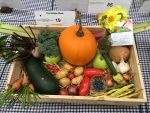
Maintaining soil and structures and planning ahead
- Continue to clear all plant debris from plots. Do not add blighted tomatoes to your compost, but burn or take to the dump.
Empty compost heaps and use the well-rotted dark crumbly material. - Apply a 5cm layer of well rotted compost or manure to bare plots or cover bare areas with brown cardboard weighed down with damp grass clippings.
- Prepare a winter compost trench for next season’s moisture loving plants such as sweet peas, runner beans or squashes. Dig a trench a spade deep and fill with kitchen vegetable waste covering each additional layer with soil.
Sowing and planting
- Continue to sow overwintering broad beans.
- Sow hardy peas either straight into the ground under fleece or 3 to a 9”pot to be planted out when the roots reach the bottom.
- Sow a gutter of peas in the green house or under cloches for salad or risotto at Christmas time.
- Sow cut-and-come-again salads in a sheltered spot or green house.
- Finish planting onion sets and garlic.Garlic needs a chilling period so plant now. With current wet winters plant on a ridge to aid drainage.
- Sow dill, chives and parsley now on a sunny windowsill.
- Order bare root trees now for the best selection.
- Fix grease bands to fruit trees to protect against winter moth. To help control pests and diseases spray fruit trees with winter wash on a calm, dry day.
- Once leaves have dropped and before bud break in February spray fruit trees with winter wash on a calm, dry day. Spraying helps to reduce overwintering pests.
- Start winter pruning of apples and pears.
- Keep overwintering brassicas covered with netting to prevent pigeon damage.
- Stake tall brassicas against wind damage.
- Sow green manures early in the month such as grazing rye.
- Clean the greenhouse to maximise light levels and before the water is turned off in December.
Harvesting
- Start to harvest winter cabbage, Brussels sprouts, leeks and kale. Wait until after frosts for parsnips as they will be sweeter.
Pruning
- Begin winter pruning of apples, pears and vines.
- Prune overgrown blackcurrant bushes- remove a third of the oldest stems to ground level.
- Fruited canes of blackberries and hybrid berries such as tayberries and loganberries should be pruned to ground level.
Gardening for wildlife
- Remove surplus dead leaves from ponds to prevent decomposition pollution.
- Clean out bird boxes of old nesting material so they may be used as winter roosts.
October jobs on your allotment


Maintaining soil and structures and planning ahead
- Continue to clear the ground of this summer’s growth, weeding as you go.
- Turn the compost heap to speed its decomposition.
- Compost fallen leaves in hessian bags. Compost pea and bean foliage,but leave the roots in the ground as they contain nitrogen.
- Plan where you will grow brassicas next year. Manure the area now and lime in the spring if the ph level is below 7.
- To maximise light levels and reduce harbouring of bugs, clean the green house with eco-friendly detergent. Garden disinfectant such as Jeyes Fluid can be used in a greenhouse or a sulphur candle if resident bugs are suspected.
- Make a last cut on grass paths and reinstate beds where grass has encroached.
- Apply grease bands around the trunks of fruit trees as a barrier to winter moths.
- Order bare-rooted fruit trees to be delivered November onwards. (See guidance on website and contact Site Secretary)
- Check that the bird netting on brassicas is secure in preparation for more wintry weather.
- Collect seeds of plants that have not been harvested. Peas and beans save well. Collect directly from the plant on a dry day to avoid fungal rot and put straight into paper bags.
Sowing and planting
- Winter salads and oriental greens can be sown in the green house or cold frame.
- Sow over-wintering broad beans either directly or start under cover in pots or root-trainers.
- Sow green manures such as rye, vetches or ryegrass to be dug in next February.
- Plant overwintering onion sets and garlic. Soil must be well drained. Onion sets should just peep above the surface. If the ph is lower than 7 add a little calicified seaweed. Plant garlic planted 1.5- 2”deep, spaced 7” apart. Both benefit from onion fertilizer.
- Plant daffodils, alliums and other spring bulbs for early spring flowering. (Hold off planting tulips till November.)
- Sow sweet peas in a cold frame or unheated greenhouse for early summer flowering and showing. Sow in root trainers or 3” pots.
- Plant out spring cabbage 6” apart.
- Take hardwood cuttings, 1ft long, from gooseberries and currants. Plant in pots of compost.
Harvesting
- Harvest winter squashes. Cut the squash carefully leaving a 2-3” stem. ‘Cure’ in a warm, dry place for 10-14 days, then in a cool, light place at around 50-55F until ready to eat. Many squash can be stored for up to 6 months.
- Store disease-free apples, pears and potatoes in a cool, dry place.
- Ensure carrots are protected with insect mesh as carrot flies are most damaging in late summer and autumn. Leave in the ground to harvest as needed.
- Harvest maincrop potatoes. Check each tuber for disease or damage and do not store damaged tubers. Store in a cool, dry place. Let the tubers dry off before storing in jute, hessian or paper bags in a dark frost-free place.
Pruning
- Lift and divide rhubarb plants that have been in situ for more than 5 years or are less productive. Keep and replant the newer outside growth and discard the centre.
- Cut down asparagus stems as they turn yellow and mulch with well-rotted manure.
- Clear away strawberry foliage to prevent build-up of pests and diseases.
Gardening for wildlife
- Leave decorative perennial seed heads as food and habitats for wildlife
- Build an insect hotel or install a log pile.
Autumn Show Results and Picture Gallery 2018
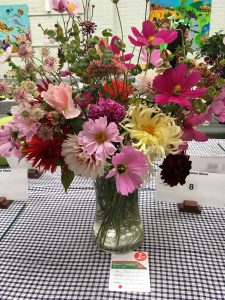
Read the list of 2018 Autumn Show First Prize Winners
Click on the gallery to view the show:-
This gallery contains 61 photos

